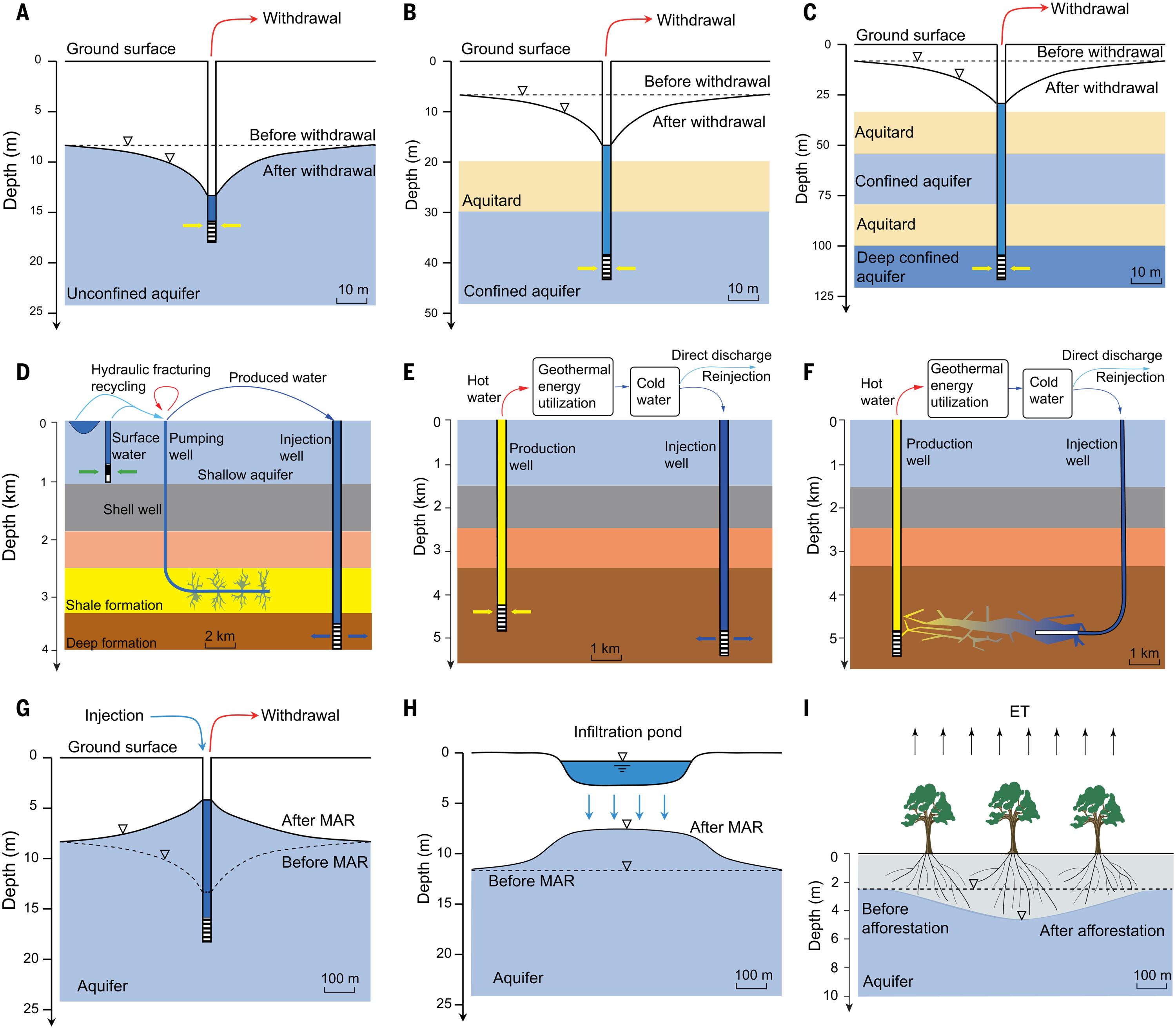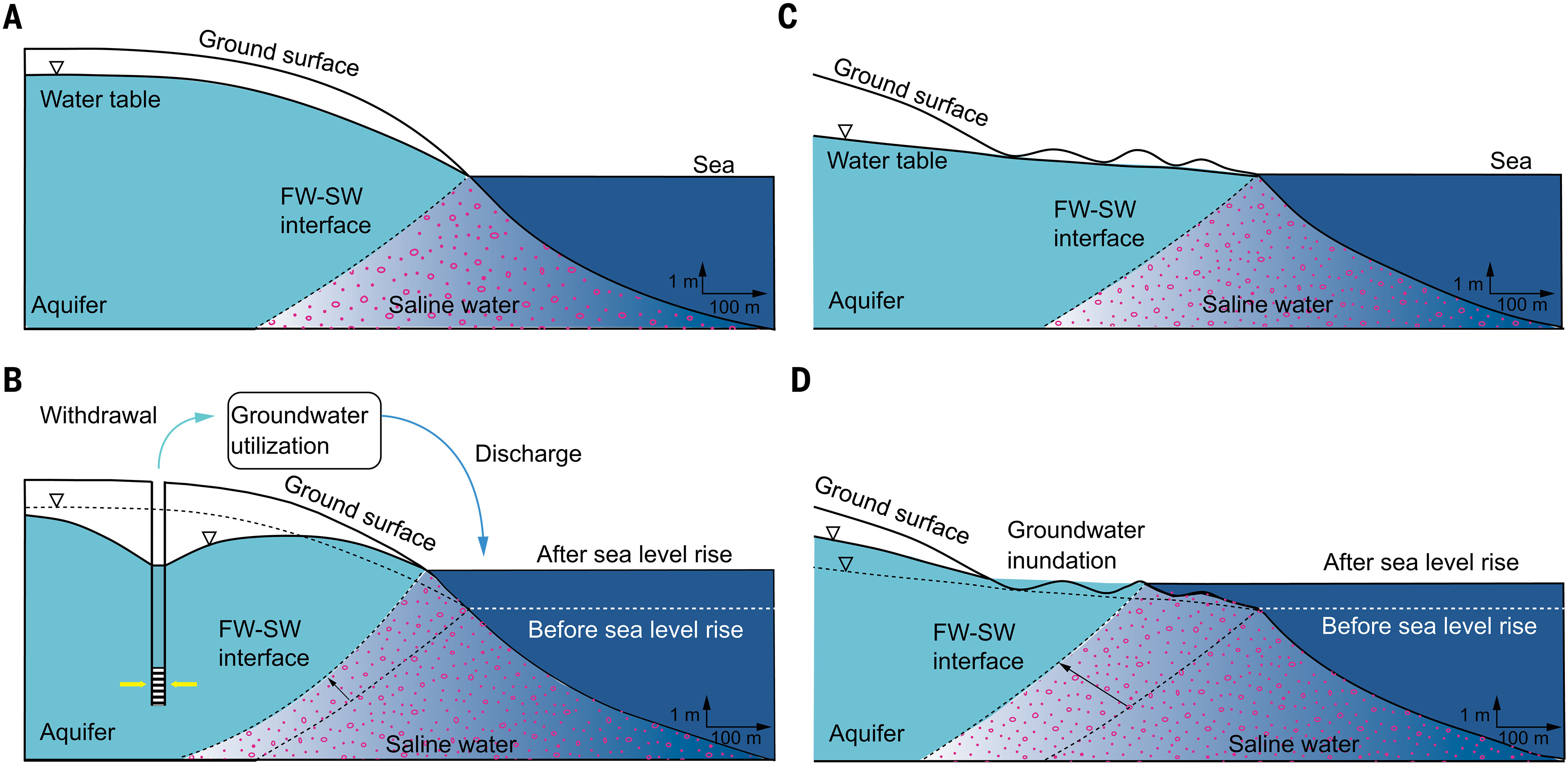文章来源:Xingxing Kuang, Junguo Liu, Bridget R. Scanlon, Jiu Jimmy Jiao, Scott Jasechko, Michele Lancia,Boris K. Biskaborn, Yoshihide Wada, Hailong Li, Zhenzhong Zeng, Zhilin Guo, Yingying Yao,Tom Gleeson, Jean-Philippe Nicot, Xin Luo, Yiguang Zou, Chunmiao Zheng. (2024). The changing nature of groundwater in the global water cycle. Science: 383, eadf0630.https://doi.org/10.1126/science.adf0630.
整理人:杨文,2023级硕士生
整理时间:2024年6月2日
Abstract: In recent decades, climate change and other anthropogenic activities have substantially affected groundwater systems worldwide. These impacts include changes in groundwater recharge, discharge, flow, storage, and distribution. Climate-induced shifts are evident in altered recharge rates, greater groundwater contribution to streamflow in glacierized catchments, and enhanced groundwater flow in permafrost areas. Direct anthropogenic changes include groundwater withdrawal and injection, regional flow regime modification, water table and storage alterations, and redistribution of embedded groundwater in foods globally. Notably, groundwater extraction contributes to sea level rise, increasing the risk of groundwater inundation in coastal areas. The role of groundwater in the global water cycle is becoming more dynamic and complex. Quantifying these changes is essential to ensure sustainable supply of fresh groundwater resources for people and ecosystems.
摘要:近几十年来,气候变化和其他人为活动对全球的地下水系统产生了重大影响。这些影响涉及到地下水的补给、排泄、流动、储存及分布等方面的变化。气候引起的变动体现在补给速率的变化上,冰川化流域中地下水对河流流量贡献的增加,以及永久冻土区地下水流动的增强。直接的人为影响包括地下水的抽取与注入、区域水流模式的改变、水位及储存量的变化,以及全球范围内食品中所含地下水的重新分配。尤其值得注意的是,地下水的开采加剧了海平面上升,提高了沿海地区地下水泛滥的风险。地下水在全球水循环中的作用正变得越来越动态且复杂。量化这些变化对于确保为人类和生态系统提供可持续的淡水地下水资源至关重要。

图 全球水文循环及其组成部分

图 地下水补给、开采、水位下降和储存变化

图 冰川流域和多年冻土区地下水流系统示意图

图 不同类型的地下水开采和补给示意图

图 土地开垦和城市化导致的地下水流系统变化

图 地下水提取、海平面上升和淹没示意图
原文链接:https://www.science.org/doi/10.1126/science.adf0630#
节选转引:https://mp.weixin.qq.com/s/randk0A2JHDLhiY1SVB8mQ